Aeg DI9993-M User Manual
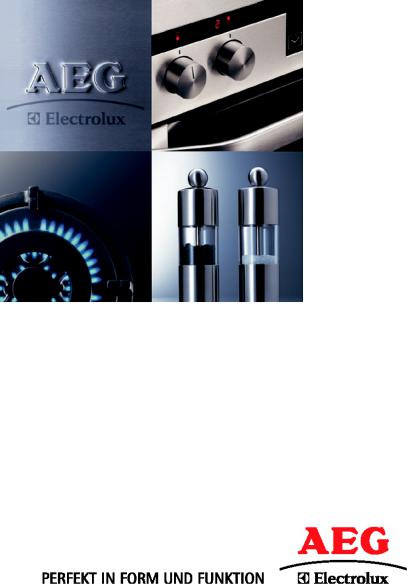
DI9993-M
User Manual |
Cooker Hood |

2 IT
INDICE
CONSIGLI E SUGGERIMENTI............................................................................................................................................. |
3 |
CARATTERISTICHE............................................................................................................................................................. |
4 |
INSTALLAZIONE.................................................................................................................................................................. |
6 |
USO.................................................................................................................................................................................... |
10 |
MANUTENZIONE............................................................................................................................................................... |
11 |

IT |
|
3 |
|
|
|
CONSIGLI E SUGGERIMENTI
Questo libretto di istruzioni per l’uso è previsto per più versioni dell’ apparecchio. É possibile che siano descritti singoli particolari della dotazione, che non riguardano il Vostro apparecchio.
INSTALLAZIONE
•Il produttore declina qualsiasi responsabilità per danni dovuti ad installazione non corretta o non conforme alle regole dell’arte.
•La distanza minima di sicurezza tra il Piano di cottura e la Cappa deve essere di
650 mm, (alcuni modelli possono essere installati ad un’altezza inferiore, fare riferimento ai paragrafi ingombro e installazione).
•Verificare che la tensione di rete corrisponda a quella riportata nella targhetta posta all’interno della Cappa.
•Per Apparecchi in Classe Ia accertarsi che l’impianto elettrico domestico garantisca un corretto scarico a terra.
•Collegare la Cappa all’uscita dell’aria aspirata con tubazione di diametro pari o superiore a 120 mm. Il percorso della tubazione deve essere il più breve possibile.
•Non collegare la Cappa a condotti di scarico dei fumi prodotti da combustione
(caldaie, caminetti, ecc.).
• Nel caso in cui nella stanza vengano utilizzati sia la Cappa che apparecchi non azionati da energia elettrica (ad esempio apparecchi utilizzatori di gas), si deve provvedere ad una aerazione sufficiente dell’ambiente. Se la cucina ne fosse sprovvista, praticare un’apertura che comunichi con l’esterno, per garantire il richiamo d’aria pulita.
USO
•La Cappa è stata progettata esclusivamente per uso domestico, per abbattere gli odori della cucina.
•Non fare mai uso improprio della Cappa.
•Non lasciare fiamme libere a forte intensità sotto la Cappa in funzione.
•Regolare sempre le fiamme in modo da evitare una evidente fuoriuscita laterale delle stesse rispetto al fondo delle pentole.
•Controllare le friggitrici durante l’uso: l’olio surriscaldato potrebbe infiammarsi.
•Non preparare alimenti flambè sotto la cappa da cucina; pericolo d’incendio.
•Questo apparecchio non deve essere utilizzato da persone (bambini inclusi) con ridotte capacità psichiche, sensoriali o mentali, oppure da persone senza esperienza e conoscenza, a meno che non siano controllati o istruiti all’uso dell’apparecchio da persone responsabili della loro sicurezza.
• I bambini devono essere supervisionati per assicurarsi che non giochino con l’apparecchio.
MANUTENZIONE
•Prima di procedere a qualsiasi operazione di manutenzione, disinserire la Cappa togliendo la spina elettrica o spegnendo l’interruttore generale.
•Effettuare una scrupolosa e tempestiva manutenzione dei Filtri secondo gli intervalli consigliati (Rischio di incendio).
•Per la pulizia delle superfici della Cappa è sufficiente utilizzare un panno umido e detersivo liquido neutro.
Il simbolo  sul prodotto o sulla confezione indica che il prodotto non deve essere considerato come un normale rifiuto domestico, ma deve essere portato nel punto di raccolta appropriato per il riciclaggio di apparecchiature elettriche ed elettroniche. Provvedendo a smaltire questo prodotto in modo appropriato, si contribuisce a evitare potenziali conseguenze negative per l’ambiente e per la salute, che potrebbero derivare da uno smaltimento inadeguato del prodotto. Per infor-mazioni più dettagliate sul riciclaggio di questo prodotto, contattare l’ufficio comunale, il servizio locale di smaltimento rifiuti o il negozio in cui è stato acquistato il prodotto.
sul prodotto o sulla confezione indica che il prodotto non deve essere considerato come un normale rifiuto domestico, ma deve essere portato nel punto di raccolta appropriato per il riciclaggio di apparecchiature elettriche ed elettroniche. Provvedendo a smaltire questo prodotto in modo appropriato, si contribuisce a evitare potenziali conseguenze negative per l’ambiente e per la salute, che potrebbero derivare da uno smaltimento inadeguato del prodotto. Per infor-mazioni più dettagliate sul riciclaggio di questo prodotto, contattare l’ufficio comunale, il servizio locale di smaltimento rifiuti o il negozio in cui è stato acquistato il prodotto.
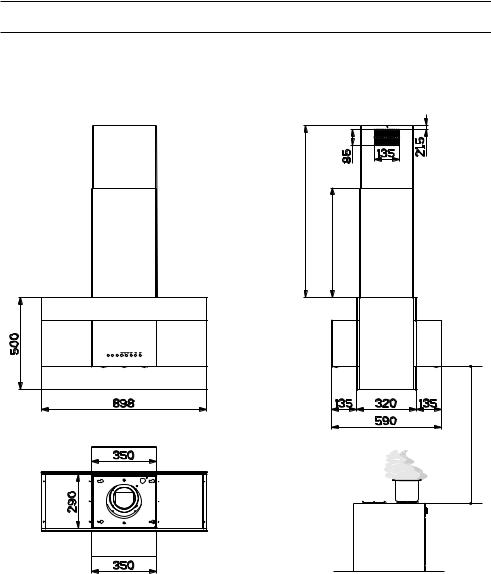
4 |
|
IT |
|
|
|
CARATTERISTICHE
Ingombro
���
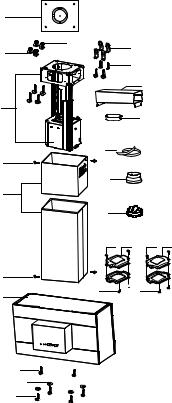
IT |
|
5 |
|
|
|
|
|
|
|
|
|
|
|
|
|
Componenti |
|
|
|
|
|
|
|
Rif. Q.tà |
Componenti di Prodotto |
||
|
|
|
|
|
|
|
1 |
1 |
Corpo Cappa completo di: Comandi, Luce, Filtri |
|
|
|
|
|
|
|
|
2 |
1 |
Camino telescopico formato da: |
|
|
|
|
|
|
|
2.1 |
1 |
Camino superiore |
||
|
|
|
|
|
|
2.2 |
1 |
Camino inferiore |
||
|
|
|
|
|
|
7.1 |
1 |
Traliccio telescopico completo di Aspiratore, formato |
||
|
|
|
|
|
|
|
|
|
|
da: |
|
|
|
|
|
|
7.1a |
1 |
Traliccio superiore |
||
|
|
|
|
|
7.1b |
1 |
Traliccio inferiore |
|||
|
|
|
|
|
9 |
1 |
Flangia di riduzione ø 150-120 mm |
|||
|
|
|
|
|
10 |
1 |
Flangia ø 150 |
|||
|
|
|
|
10a |
1 |
Flangia con valvola ø 150 mm |
||||
|
|
|
15 |
1 |
Raccordo Uscita Aria |
|||||
|
|
24 |
2 |
Scatola connessioni |
||||||
|
|
25 |
|
Fascette stringitubo (non incluse) |
||||||
|
|
|
|
|
||||||
|
|
Rif. Q.tà |
Componenti di Installazione |
|||||||
|
|
11 |
4 |
Tasselli ø 10 |
||||||
|
|
12c |
6 |
Viti 2,9 x 6,5 |
||||||
|
12e |
2 |
Viti 2,9 x 9,5 |
|||||||
|
12f |
2 |
Viti M4 x 80 |
|||||||
|
12g |
4 |
Viti M6 x 80 |
|||||||
|
12h |
4 |
Viti 5,2 x 70 |
|||||||
|
12q |
4 |
Viti 3,5 x 9,5 |
|||||||
|
21 |
1 |
Dima di foratura |
|||||||
|
22 |
8 |
Rondelle ø 6,4 |
|||||||
|
23 |
4 |
Dadi M6 |
|||||||
|
|
|
|
|
|
|
|
|
|
|
|
|
|
|
|
|
|
|
|
Q.tà |
Documentazione |
|
|
|
|
|
|
|
|
|
1 |
Libretto Istruzioni |
|
|
|
|
|
|
|
|
|
|
|
|
|
|
|




|
|
|
|
|


6 |
|
IT |
|
|
|
INSTALLAZIONE
Foratura Soffitto/Mensola e Fissaggio Traliccio
FORATURA SOFFITTO/MENSOLA
•Con l’ausilio di un Filo a piombo riportare sul Soffitto/Mensola di supporto il centro del Piano di Cottura.
•Appoggiare al Soffitto/Mensola la Dima di Foratura 21 in dotazione, facendo coincidere il suo centro al centro proiettato e allineando gli assi della Dima agli assi del Piano di Cottura.
•Segnare i centri dei Fori della Dima.
•Forare i punti seguenti:
•Soffitto in Calcestruzzo massiccio: secondo Tasselli per Calcestruzzo impiegati.
•Soffitto in Laterizio a camera d’aria, con spessore resistente di 20 mm: ø 10 mm (inserire subito i Tasselli 11 in dotazione).
•Soffitto in Travatura di Legno: secondo Viti per Legno impiegate.
•Mensola in Legno: ø 7 mm.
•Passaggio del Cavo elettrico di Alimentazione: ø 10 mm.
•Uscita Aria (Versione Aspirante): secondo diametro del collegamento alla Tubazione di Evacuazione Esterna.
•Avvitare, incrociandole e lasciando 4-5 mm dal soffitto, due viti:
•per Calcestruzzo massiccio, Tasselli per Calcestruzzo, non in dotazione.
•per Laterizio a camera d’aria, con spessore resistente di 20 mm circa, Viti 12h, in dotazione.
•per Travatura di legno, Viti per legno, non in dotazione.
•per Mensola in Legno, viti 12g con Rondelle 22 e Dadi 23, in dotazione.
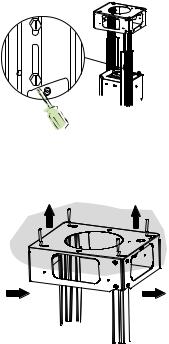
IT |
|
7 |
|
|
|
Fissaggio Traliccio
•Svitare le due viti che fissano il camino inferiore e sfilarlo dal traliccio (dalla parte inferiore).
•Svitare le due viti che fissano il camino superiore e sfilarlo dal traliccio (dalla parte superiore).
Nel caso in cui si voglia regolare l’altezza del traliccio procedere come segue:
• Svitare le viti metriche che uniscono le due colonne, poste ai lati del traliccio;
• Regolare l’altezza desiderata del traliccio e riavvitare le viti precedentemente tolte;
• Inserire il camino superiore dall’ alto e lasciarlo libe-ro sul traliccio;
• Sollevare il traliccio, incastrare le asole sulle viti e scorrere fino a battuta;
•Stringere le due viti e avvitare le altre due in dotazio-ne;
Prima di serrare definitivamente le viti è possibile |
|
|
effet-tuare delle regolazioni spostando il traliccio, |
|
|
facendo attenzione che le viti non escano dalla sede |
|
|
dell’asola di regolazione. |
|
|
•Il fissaggio del Traliccio deve essere sicuro in rela-zione sia al peso della Cappa sia alle sol-
lecitazioni causate da occasionali spinte laterali |
|
|
all’Apparecchio montato. A fissaggio avvenuto |
|
|
verificare quindi che la base sia stabile anche |
|
|
se il Traliccio è sollecitato a flessione. |
|
|
•In tutti i casi in cui il Soffitto non fosse suffi- ciente-mente robusto sul punto di sospensione, l’Installatore dovrà provvedere a irrobustirlo con opportune piastre e contropiastre ancorate a parti strutturalmente resi-stenti.

8 |
|
IT |
|
|
|
Connessioni
USCITA ARIA VERSIONE ASPIRANTE
Per installazione in Versione Aspirante collegare la Cappa alla tubazione di uscita per mezzo di un tubo rigido o flessibile la cui scelta è lasciata all’installatore.
Collegamento tubo ø 150
•Inserire la Flangia con valvola 10a ø150 sull’Uscita del Corpo Cappa.
•Fissare il tubo con adeguate fascette stringitubo. Il materiale occorrente non è in dotazione.
Collegamento tubo ø 120
•Per collegamento con tubo ø120 mm, inserire la Flangia di riduzione 9 sulla flangia ø 150 10a precedentemente installata.
•Fissare il tubo con adeguate fascette stringitubo. Il materiale occorrente non è in dotazione.
•In ambedue i casi, togliere eventuali Filtri Antiodore al Carbone attivo.


|


Uscita aria Versione Filtrante
•Fissare il Raccordo 15 al traliccio utilizzando le 4 Viti in dotazione.
•Incastrare la flangia 10 nell’apposito foro inferiore del Raccordo 15.
•Collegare l’uscita aria della cappa con la flangia posta sotto al raccordo per mezzo di un tubo rigido o flessibile ø 150mm , la cui scelta è lasciata all’installatore

IT |
|
9 |
|
|
|
Montaggio Camino e Fissaggio Corpo
Cappa
•Posizionare il Camino superiore e fissare nella parte superiore al Traliccio con 2 Viti 12c (2,9 x 6,5) in dotazione.
•Analogamente posizionare il Camino inferiore e fissare nella parte inferiore al Traliccio con 2 Viti 12c (2,9 x 6,5) in dotazione.
Prima di fissare il Corpo Cappa al Traliccio:
•Avvitare per metà le 2 Viti 12f sulla parte inferiore del traliccio in posizione laterale in corrispondenza dei 2 fori predisposti.
•Togliere i Filtri antigrasso dal Corpo Cappa;
•Togliere eventuali Filtri Antiodore al Carbone attivo.
•Sollevare il Corpo Cappa e incastrare le Viti 12f sulle asole (rif.A) fino a battuta.
•Fissare da sotto con 4 Viti 12q e 4 Rondelle 22 in dotazione il Corpo Cappa al Traliccio predisposto (rif.B) e serrare definiti-vamente tutte le Viti.
CONNESSIONE ELETTRICA
•Collegare la Cappa all’Alimentazione di Rete interponendo un Interruttore bipolare con apertura dei contatti di almeno 3 mm.
•Rimuovere i Filtri antigrasso (vedi par. “Manutenzione”) e assicurarsi che il connettore del Cavo di alimentazione sia correttamente inserito nella presa dell’Aspiratore.
•Aprire le Scatole di protezione 24 e Collegare i Connettori dei Faretti Lux riponendoli uno per Scatola di protezione.
•Collegare il Connettore dei Comandi Cmd riponendolo in una della Scatole di protezione 24.
•Chiudere le Scatole di protezione 24 con le Viti tolte in precedenza.
•Per la Versione Filtrante montare il Filtro Antiodore al Carbone attivo.
•Rimontare i Filtri Antigrasso.
|
|
|
|
|
|
|
|
|
|

10 |
|
IT |
|
|
|
USO
|
|
|
|
|
|
|
|
|
|
|
|
|
|
|
|
|
|
|
|
|
|
|
|
|
|
|
|
|
|
|
|
|
|
|
|
|
|
|
|
|
|
|
|
|
|||||||||
|
|
|
|
|
|
|
|
|
|
|
|
|
|
|
|
|
|
Tasto |
Funzione |
|
|
|
|
|
|
|
|
Led |
|
|
|
|
|||
A |
Accende e spegne l’impianto di illuminazione. |
|
|
|
- |
|
|
|
|
|
|
|
|||||
B |
Accende e spegne l’impianto di illuminazione ad intensità |
- |
|
|
|
|
|
|
|
||||||||
|
ridotta. |
|
|
|
|
|
|
|
|
|
|
|
|
|
|
|
|
|
|
|
|
|
|
|
|
|
|
|
|
|
|
|
|||
C |
Accende e spegne il motore di aspirazione all’ultima |
I Led si accendono o si spengono in base alla |
|||||||||||||||
|
velocità utilizzata. |
|
|
|
|
|
|
|
|
velocità impostata. |
|
|
|
|
|||
|
|
|
|
|
|
|
|
|
|
Velocità 1, Led V1 acceso. |
|
|
|||||
|
|
|
|
|
|
|
|
|
|
Velocità 2, Led V1+V2 accesi. |
|
|
|||||
|
|
|
|
|
|
|
|
|
|
Velocità 3, Led V1+V2+V3 accesi. |
|||||||
D |
Incrementa la velocità di esercizio. |
|
|
|
|
|
|
- |
|
|
|
|
|
|
|
||
E |
Decrementa la velocità di esercizio. |
|
|
|
|
|
|
- |
|
|
|
|
|
|
|
||
F |
Attiva la velocità intensiva da qualsiasi velocità o da motore |
Si accende il Led F. |
|
|
|||||||||||||
|
spento, tale velocità è temporizzata a 5 minuti, al termine |
|
|
|
|
|
|
|
|
||||||||
|
del tempo il sistema ritorna alla velocità precedentemente |
|
|
|
|
|
|
|
|
||||||||
|
impostata. Adatta a fronteggiare le massime emissioni di |
|
|
|
|
|
|
|
|
||||||||
|
fumi di cottura.Si Disattiva premendo il Tasto o Spegnendo |
|
|
|
|
|
|
|
|
||||||||
|
il Motore. |
|
|
|
|
|
|
|
|
|
|
|
|
|
|
|
|
|
|
|
|
|
|
|
|
|
|
|
|
|
|
|
|||
G |
Attiva lo spegnimento automatico ritardato del Motore e |
Si accende il Led G. |
|
|
|||||||||||||
|
dell’Impianto di Illuminazione di 10’ se la velocità impostata |
|
|
|
|
|
|
|
|
||||||||
|
è la Terza, 15’ se è la Seconda,20’ se è la prima. Adatto |
|
|
|
|
|
|
|
|
||||||||
|
per completare l’eliminazione di odori residui, si disattiva |
|
|
|
|
|
|
|
|
||||||||
|
premendo il tasto o spegnendo il motore. |
|
|
|
|
|
|
|
|
|
|
|
|||||
H |
Effettua il Reset dell’allarme saturazione Filtri solo se |
Dopo 100 ore di Funzionamento il Led H è Ac- |
|||||||||||||||
|
segnalato. |
|
|
|
|
|
|
|
|
ceso Fisso per segnalare la saturazione dei Filtri |
|||||||
|
|
|
|
|
|
|
|
|
|
Metallici.Dopo 200 ore di Funzionamento il Led H |
|||||||
|
|
|
|
|
|
|
|
|
|
Lampeggia per segnalare la saturazione dei Filtri al |
|||||||
|
|
|
|
|
|
|
|
|
|
Carbone Attivo. |
|
|
|
|
|||
|
|
|
|
|
|
|
|
|
|
|
|
|
|
|
|
|
|
Attenzione: per attivare la funzione premere sul símbolo.
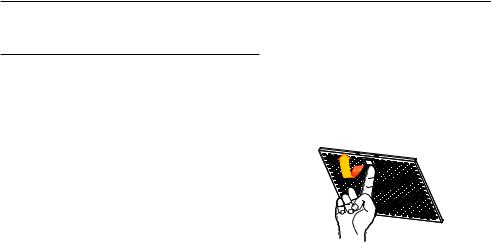
IT |
|
11 |
|
|
|
MANUTENZIONE
Filtri antigrasso metallici
Reset del segnale di allarme
•Spegnere le Luci e il Motore di aspirazione.
•Premere il tasto H.
Pulizia Filtri
•Sono lavabili in lavastoviglie, e necessitano di essere lavati quando il Led H si accende o almeno ogni
2 mesi circa di uti-lizzo o più frequentemente, per un uso particolarmente intenso.
• Togliere i Filtri uno alla volta,sostenendoli con una mano men-tre con l’altra si tira la leva verso il basso.
•Lavare i Filtri evitando di piegarli, e lasciarli asciugare prima di rimontarli.
•Rimontarli facendo attenzione a mantenere la maniglia verso la parte visibile esterna.

12 |
|
IT |
|
|
|
Filtri antiodore al Carbone attivo (Versione Filtrante)
Non è lavabile e non è rigenerabile, va sostituito quando il led H lampeggia o almeno ogni 4 mesi. La segnalazione di allarme si verifica solo quando é azionato il Motore di aspirazione.
Attivazione del segnale di allarme
•Nelle Cappe in Versione Filtrante, la segnalazione di Allarme saturazione Filtri va attivata al momento dell’installazione o successivamente.
•Spegnere le Luci e il Motore di aspirazione.
•Premere il tasto G.
•Entro 5 secondi premere il Tasto H sino al lampeggio di conferma del Led H:
•2 lampeggi Led - Allarme saturazione Filtro antiodore al Carbone attivo ATTIVATO.
•1 lampeggio Led - Allarme saturazione Filtro antiodore al Carbone attivo DISATTIVATO.
Sostituzione Filtro Antiodore al Carbone Attivo
Reset del segnale di allarme
•Spegnere le Luci e il Motore di aspirazione.
•Premere il tasto H.
Sostituzione Filtro
•Togliere i Filtri antigrasso metallici.
•Rimuovere il Filtro antiodore al Carbone attivo saturo, agendo sugli appositi agganci.
•Montare il nuovo Filtro agganciandolo nella sua sede.
•Rimontare i Filtri antigrasso metallici.
Illuminazione
SOSTITUZIONE LAMPADE
Lampade alogene da 20 W.
• Togliere le due viti che fissano il Supporto illuminazione e sfilarlo dalla Cappa.
• Estrarre la Lampada dal Supporto.
• Sostituirla con una nuova di uguali caratteristiche, facendo attenzione di inserire correttamente i due spinotti nella sede del Supporto.
•Rimontare il Supporto fissandola con le due Viti pre-cedente- mente tolte.

EN |
13 |
INDEX |
|
RECOMMENDATIONS AND SUGGESTIONS................................................................................................................... |
14 |
CHARACTERISTICS.......................................................................................................................................................... |
15 |
INSTALLATION................................................................................................................................................................... |
17 |
USE..................................................................................................................................................................................... |
21 |
MAINTENANCE.................................................................................................................................................................. |
22 |

14 |
|
EN |
|
|
|
RECOMMENDATIONS AND SUGGESTIONS
The Instructions for Use apply to several versions of this appliance. Accordingly, you may find descriptions of individual features that do not apply to your specific appliance.
INSTALLATION
•The manufacturer will not be held liable for any damages resulting from in-correct or improper installation.
•The minimum safety distance between the cooker top and the extractor hood is 650 mm (some models can be installed at a lower height, please re-fer to the paragraphs on working dimensions and installation).
•Check that the mains voltage corresponds to that indicated on the rating plate fixed to the inside of the hood.
•For Class I appliances, check that the domestic power supply guarantees adequate earthing.Connect the extractor to the exhaust flue through a pipe of minimum diame-ter 120 mm. The route of the flue must be as short as possible.
•Do not connect the extractor hood to exhaust ducts carrying combustion fumes (boilers, fireplaces, etc.).
•If the extractor is used in conjunction with non-electrical appliances (e.g. gas burn-
ing appliances), a sufficient degree of aeration must be guaranteed in the room in order to prevent the backflow of exhaust gas. The kitchen must have an opening communicating directly with the open air in order to guar-antee the entry of clean air.
USE
•The extractor hood has been designed exclusively for domestic use to elimi-nate kitchen smells.
•Never use the hood for purposes other than for which it has been designed.
•Never leave high naked flames under the hood when it is in operation.
•Adjust the flame intensity to direct it onto the bottom of the pan only, making sure that it does not engulf the sides.
•Deep fat fryers must be continuously monitored during use: overheated oil can burst into flames.
•Do not flambè under the range hood; risk of fire
•This appliance is not intended for use by persons (including children) with reduced physical, sensory or mental capabilities, or lack of experience and knowledge, unless they have been given supervision or instruction concern-ing use of the appliance by a person responsible for their safety.
•Children should be supervised to ensure that they do not play with the appli-
ance.
MAINTENANCE
• Switch off or unplug the appliance from the mains supply before carrying out any maintenance work.
•Clean and/or replace the Filters after the specified time period (Fire hazard).
•Clean the hood using a damp cloth and a neutral liquid detergent.
The symbol  on the product or on its packaging indicates that this product may not be treated as household waste. Instead it shall be handed over to the applicable collection point for the recycling of electrical and electronic equipment. By ensuring this product is disposed of correctly, you will help prevent potential negative consequences for the environment and human health, which could otherwise be caused by inappropriate waste handling of this product. For more detailed information about recycling of this product, please contact your local city office, your household waste disposal service or the shop where you purchased the product.
on the product or on its packaging indicates that this product may not be treated as household waste. Instead it shall be handed over to the applicable collection point for the recycling of electrical and electronic equipment. By ensuring this product is disposed of correctly, you will help prevent potential negative consequences for the environment and human health, which could otherwise be caused by inappropriate waste handling of this product. For more detailed information about recycling of this product, please contact your local city office, your household waste disposal service or the shop where you purchased the product.

EN |
|
15 |
|
|
|
CHARACTERISTICS
Dimensions
���
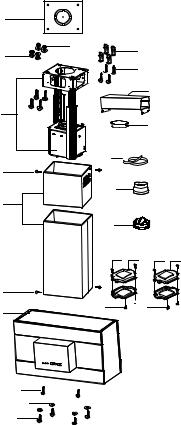
16 |
|
EN |
|
|
|
|
|
|
|
|
|
|
|
|
|
|
|
|
|
|
Components |
|
|
|
|
|
|
|
|
|
|
|
|
Ref. Q.ty |
Product Components |
||
|
|
|
|
|
|
|
|
|
|
|
|
1 |
1 |
Hood Body, complete with: Controls, Light, Blower, |
|
|
|
|
|
|
|
|
|
|
|
|
|
|
|
|
Filters |
|
|
|
|
|
|
|
|
|
|
|
|
2 |
1 |
Telescopic Chimney comprising: |
|
|
|
|
|
|
|
|
|
|
|
|
2.1 |
1 |
Upper Section |
||
|
|
|
|
|
|
|
|
|
|
|
2.2 |
1 |
Lower Section |
||
|
|
|
|
|
|
|
|
|
|
|
7.1 |
1 |
Telescopic frame complete with extractor, consisting |
||
|
|
|
|
|
|
|
|
|
|
|
|
|
|
|
of: |
|
|
|
|
|
|
|
|
|
|
|
7.1a |
1 |
Upper frame |
||
|
|
|
|
|
|
|
|
|
|
7.1b |
1 |
Lower frame |
|||
|
|
|
|
|
|
|
|
|
|
9 |
1 |
Reducer Flange ø 150-120 mm |
|||
|
|
|
|
|
|
|
|
|
10 |
1 |
Flange ø 150 |
||||
|
|
|
|
|
|
|
|
10a |
1 |
Dumper ø 150mm |
|||||
|
|
|
|
|
|
|
|
15 |
1 |
Air Outlet Connection |
|||||
|
|
|
|
|
|
|
24 |
2 |
Junction box |
||||||
|
|
|
|
|
|
|
25 |
|
Pipe clamps (not included) |
||||||
|
|
|
|
|
|
|
|
|
|
||||||
|
|
|
|
|
|
|
Ref. Q.ty |
Installation Components |
|||||||
|
|
|
|
|
|
|
11 |
4 |
Wall Plugs ø 10 |
||||||
|
|
|
|
|
|
|
12c |
6 |
Screws 2,9 x 6,5 |
||||||
|
|
|
|
|
|
12e |
2 |
Screws 2,9 x 9,5 |
|||||||
|
|
|
|
|
12f |
2 |
Screws M4 x 80 |
||||||||
|
|
|
|
12g |
4 |
Screws M6 x 80 |
|||||||||
|
|
|
|
12h |
4 |
Screws 5,2 x 70 |
|||||||||
|
|
|
12q |
4 |
Screws 3,5 x 9,5 |
||||||||||
|
|
21 |
1 |
Drilling template |
|||||||||||
|
22 |
8 |
6.4 mm int. dia washers |
||||||||||||
|
23 |
4 |
M6 nuts |
||||||||||||
|
|
|
|
|
|
|
|
|
|
|
|
|
|
|
|
|
|
|
|
|
|
|
|
|
|
|
|
|
|
Q.ty |
Documentation |
|
|
|
|
|
|
|
|
|
|
|
|
|
|
1 |
Instruction Manual |
|
|
|
|
|
|
|
|
|
|
|
|
|
|
|




|
|
|
|
|


EN |
|
17 |
|
|
|
INSTALLATION
Drilling the Ceiling/shelf and fixing the frame
DRILLING THE CEILING/SHELF
•Use a plumb line to mark the centre of the hob on the ceiling/support shelf.
•Place the drilling template 21 provided on the ceiling/support shelf, making sure that the template is in the correct position by lining up the axes of the template with those of the hob.
•Mark the centres of the holes in the template.
•Drill the holes at the points marked:
•For concrete ceilings, drill for plugs appropriate to the screw size.
•For hollow brick ceilings with wall thickness of 20 mm: drill ø 10 mm(immediately insert the Dowels 11 supplied).
•For wooden beam ceilings, drill according to the wood screws used.
•For wooden shelf, drill ø 7 mm.
•For the power supply cable feed, drill ø 10 mm.
•For the air outlet (Ducted Version), drill according to the diameter of the external air ex haust duct connection.
•Insert two screws of the following type, crossing them and leaving 4-5 mm from the ceiling:
•For concrete ceilings, use the appropriate plugs for the screw size (not provided).
•for Cavity ceiling with inner space, with wall thickness of approx. 20 mm, Screws 12h, sup plied.
•For wooden beam ceilings, use 4 wood screws (not provided).
•For wooden shelf, use 4 screws 12g with washers 22 and nuts 23, provided.

18 |
|
EN |
|
|
|
Fixing the frame
•Loosen the two screws fastening the lower chimney and remove this from the lower frame.
•Loosen the two screws fastening the upper chimney and remove this from the upper
frame.
If you wish to adjust the height of the frame, proceed as follows:
• Unfasten the metric screws joining the two columns, located at the sides of the frame.
• Adjust the frame to the height required, then refit all the screws removed as above.
• Insert the upper chimney stack from above, and leave it running free on the frame.
•Lift up the frame, fit the frame slots onto the screws up to the slot end positions.
•Tighten the two screws and fasten the other two screws provided with the hood.
Before tightening the screws completely it is pos- |
|
|
|
|
|
sible to adjust the frame by turning it. Make sure |
|
|
that the screws do not come out of their seats in |
|
|
the slotted holes. |
|
|
• The frame mountings must be secure to with- |
|
|
stand the weight of the hood and any stresses |
|
|
caused by the oc-casional side thrust applied |
|
|
to the device. On completion, check that the |
|
|
base is stable, even if the frame is subjected to |
|
|
bending. |
|
|
•In all cases where the ceiling is not strong enough at the suspension point, the installer must provide strengthening using suitable plates and backing pieces anchored to the structurally sound parts.

EN |
|
19 |
|
|
|
Connections
DUCTED VERSION AIR EXHAUST SYSTEM
When installing the ducted version, connect the hood to the chimney using either a flexible or rigid pipe the choice of which is left to the installer.
To install a ø 150
•To install the dumper 10a ø 150.
•Fix the pipe using the pipe clamps 25(not included).
To install a ø 120
•To install a ø 120 mm air exhaust connection, insert the reducer flange 9 on the dumper 10a.
•Fix the pipe using the pipe clamps 25(not included).
•Remove any activated charcoal filters.


|


Recirculation version air outlet
•Fix the connection 15 to the frame using the 4 screws provided.
•Fix the flange 10 to the lower opening of the connection 15.
•Connect the hood air outlet to the flange in the lower part of the junction using a rigid or flexible ø 150 tube (by installer’s choice).

20 |
|
EN |
|
|
|
Flue assembly - Mounting the hood body
•Position the upper chimney section and fix the upper part to the frame using the 2 screws 12c (2,9 x 6,5) provided.
•Similarly, position the lower chimney section and fix the lower part to the frame using the 2 screws 12c (2,9 x 6,5) provided.
Before fixing the hood canopy to the frame:
•Screw the 2 screws 12f half way into the holes provided in the sides of the bottom of the frame.
•Remove the grease filters from the hood canopy.
•Remove any activated charcoal filters.
•Lift the hood canopy and engage the screws 12f in the slots (A) as far as they will go.
•Working from below, fix the hood canopy to the frame (B), using the 4 screws 12q and 4 washers 22 provided, then tighten all the screws securely.
|
|
|
|
|
|
|
|
|
|
ELECTRICAL CONNECTION
•Connect the hood to the mains through a two-pole switch ha-ving a contact gap of at least 3 mm.
•Remove the grease filters (see paragraph Maintenance) being sure that the connector of the feeding cable is correctly inserted in the socket placed on the side of the fan.
•Open the junction box 24 and connect the lights connectors Lux putting one of them into each box.
•Connect the control connector Cmd putting it in one of the junction boxes 24.
•Close the junction boxes 24 using the screws provided.
•For the cycling version, fit the charcoal filter.
•Replace the grease filters.

EN |
|
21 |
|
|
|
USe
|
|
|
|
|
|
|
|
|
|
|
|
|
|
|
|
|
|
|
|
|
|
|
|
|
|
|
|
|
|
|
|
|
|
|
|
|
|
|
|
|
|
|
|
|
|||||||||
|
|
|
|
|
|
|
|
|
|
|
|
|
|
|
|
|
|
Button |
Function |
|
|
|
|
|
|
|
|
LED |
|
|
|
|
|
||
A |
Turns the lighting system on and off. |
|
|
|
- |
|
|
|
|
|
|
|
|||||
B |
Turns the reduced intensity lighting system on and off. |
- |
|
|
|
|
|
|
|
||||||||
C |
Turns the suction motor on and off at the last speed |
The LEDs turn on and off according to the speed |
|||||||||||||||
|
used. |
|
|
|
|
|
|
|
|
set. |
|
|
|
|
|
||
|
|
|
|
|
|
|
|
|
|
Speed 1, Led V1 on. |
|
|
|||||
|
|
|
|
|
|
|
|
|
|
Speed 2, Led V1+V2 on. |
|
|
|||||
|
|
|
|
|
|
|
|
|
|
Speed 3, Led V1+V2+V3 on. |
|
|
|||||
D |
Increase the working speed. |
|
|
|
|
|
|
- |
|
|
|
|
|
|
|
||
E |
Decrease the working speed. |
|
|
|
|
|
|
- |
|
|
|
|
|
|
|
||
F |
Activates intensive speed from any other speed or with the |
Led F lights up. |
|
|
|
|
|
||||||||||
|
motor off. This speed is timed to run for 5 minutes, after |
|
|
|
|
|
|
|
|
||||||||
|
which the system returns to the previous speed. Suitable |
|
|
|
|
|
|
|
|
||||||||
|
to deal with maximum cooking fumes.Disabled by pressing |
|
|
|
|
|
|
|
|
||||||||
|
the Button or turning the Motor off. |
|
|
|
|
|
|
|
|
|
|
|
|
|
|
||
|
|
|
|
|
|
|
|
|
|
|
|
|
|
|
|
||
G |
Activates automatic delayed shutdown of the Motor and the |
Led G lights up. |
|
|
|
|
|
||||||||||
|
Lighting System after 10’ if Speed Three is set, after 15’ if |
|
|
|
|
|
|
|
|
||||||||
|
Speed Two is set, after 20’ if Speed One is set. Suitable |
|
|
|
|
|
|
|
|
||||||||
|
to complete elimination of residual fumes. Disabled by |
|
|
|
|
|
|
|
|
||||||||
|
pressing the button or turning the motor off. |
|
|
|
|
|
|
|
|
|
|
|
|||||
|
|
|
|
|
|
|
|
|
|
|
|
|
|
|
|||
H |
Resets the Filter saturation alarm, if indicated. |
|
|
|
After 100 Working Hours, Led H lights up Fixed to |
||||||||||||
|
|
|
|
|
|
|
|
|
|
indicate saturation of the Metal Grease filtersAfter 200 |
|||||||
|
|
|
|
|
|
|
|
|
|
Working Hours, Led H flashes to indicate saturation |
|||||||
|
|
|
|
|
|
|
|
|
|
of the Activated Charcoal Filters. |
|
|
|||||
|
|
|
|
|
|
|
|
|
|
|
|
|
|
|
|
|
|
Warning: In order to activate the function press on the symbol
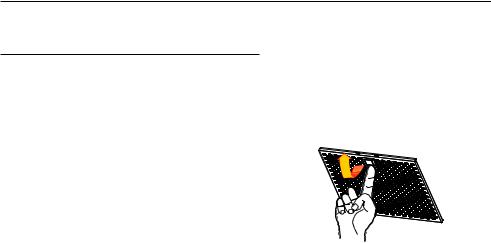
22 |
|
EN |
|
|
|
MAINTENANCE
Metal grease filters
Resetting the alarm signal
•Turn the Lights and the Suction Motor off.
•Press button H.
Cleaning the Filters
•These can be washed in the dishwasher, and need to be cleaned whenever the H Led comes on or at
least once every 2 months use, or more frequently if use is particularly intensive.
• Remove the Filters one at a time, supporting them with one hand while you pull the lever down with the other.
•Wash the Filters without bending them, and leave them to dry completely before replacing.
•Replace, taking care to ensure that the handle faces forwards.

EN |
|
23 |
|
|
|
Activated Charcoal Filter (Recirculation Version)
This cannot be washed or regenerated, and must be changed at least once every 4 months, or when led H starts to flash. The alarm signal only appears when the Suction motor is turned on.
Activating the alarm signal
•In Recirculation Version Hoods, the Filter Saturation Alarm must be activated on installa-tion or at a later date.
•Turn the Lights and the Suction Motor off.
•Press button G.
•Within 5 seconds, press Button H until Led H flashes in confirmation:
•Led flashes twice – Activated Charcoal Filter saturation alarm ACTIVATED.
•Led flashes once – Activated Charcoal Filter saturation alarm DEACTIVATED.
Changing the Activated Charcoal Filter
Resetting the alarm signal
•Turn the Lights and the Suction Motor off.
•Press button H.
Changing the Filter
•Remove the metal grease filters.
•Remove the saturated charcoal filter by releasing the fixing hooks
•Fit the new filter and fasten it in its correct position.
•Put the metal grease filters in their seats.
Lighting
LIGHT REPLACEMENT
20 W halogen light.
• Remove the 2 screws fixing the Lighting support, and pull it out of from the Hood.
• Extract the lamp from the Support.
•Replace with another of the same type, making sure that the two pins are properly inserted in the lamp holder socket holes.
•Refit the Support, fixing it in place with the two screws removed as above.

24 FR
SOMMAIRE
RECOMMENDATIONS AND SUGGESTIONS................................................................................................................... |
25 |
CHARACTERISTICS.......................................................................................................................................................... |
26 |
INSTALLATION................................................................................................................................................................... |
28 |
USE..................................................................................................................................................................................... |
32 |
MAINTENANCE.................................................................................................................................................................. |
33 |
